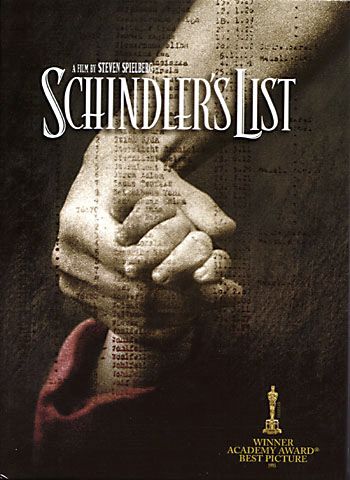|
Reviews of Recent Independent, Foreign, & Documentary Films in Theaters and DVD/Home Video
SCHINDLER'S LIST
In hindsight, it is remarkable to think that people concerned with the impossibility of
representing onscreen the magnitude of the Holocaust were worried about director Spielberg's
depiction of it when Schindler's List was initially released in 1993. Hailed as one of his
more sobering, realistic, and distinctly unsentimental efforts, the film quickly went on to gather
critical acclaim, drowning out any potential protests, and has come to be recognized as the
definitive cinematically epic rendering of one of humanity's darkest periods.
The film chronicles the real life of Nazi war profiteer Oskar Schindler (ably portrayed by
Neeson) as he gains a conscience and manages to save 1,100 Jews by conning the Nazis into
believing the Jews are working at his factories - all at the expense of his own personal
fortune.
Despite Spielberg's statements that he consciously made the film without the use of his cinematic
"toolbox," or previous manipulative techniques, Schindler's List ultimately does employ
skillful technical craftsmanship in the service of imbuing its story with the power it deserves. Its
black-and-white photography and use of white typeface give it the feel of a documentary
newsreel. Detached and restrained, it nevertheless graphically shows the brutality of the
murderers, letting the violence speak for itself. Screenwriter Zaillian deftly conveys the
ambiguous manner in which Schindler decides to carry out his rescue plan. And the
performances are uniformly strong.
However, the highly polished film still relies on a neat narrative structure. Kaminski's
black-and-white cinematography provides a classically sleek look that is far from the scratchy
war footage it is allegedly meant to recall. The film's dispassion, while evolving a deeper
feeling of empathy and melancholy, is nevertheless initially striking as, perhaps, inappropriately
and unnecessarily ironic. (Though Schindler's hysterical monologue at the end reeks of
melodrama.) Some of the black-market-dealing Jewish characters seem to fall into anti-Semitic
stereotypes. And Williams's score, while a beautiful and subtle hymn to the Jews’ strength, might
nevertheless be too beautiful, considering the film's subject matter.
Furthermore, there is a sequence in which women are sent to showers in Auschwitz and are
relieved when actual water, not gas, pours down on them. When taken with the Jewish prisoners'
dismissal of gas chamber stories as urban legends earlier in the film, this shower sequence has
been criticized as inadvertently and clumsily making the reality of the gas chambers seem
dubious, and therefore as a large misstep of the film.
Spielberg should get credit, though, for explicitly grappling with issues of historicity and
remembrance. Perhaps the sequence that Schindler's List will best be
remembered for is one that has been critically discussed as providing Spielberg's clearest
rationale for making the film. Over the masterful montage of the Nazi liquidation of the Krakow
ghetto, German Commandant Amon Goeth (Fiennes) delivers a speech proclaiming the historic
nature of their undertaking. He states: "For six centuries, there has been a Jewish Krakow... By
this evening, those six centuries are a rumor. They never happened. Today is history." In this
way, the film understands that history is often merely a certain, revised version of events. The
significance of Schindler's List, then, lies in its status as Spielberg's vividly stunning
contribution to ensuring that this moment in history is never forgotten, and to aid in preventing
something like it from occurring again.
DVD Extras: The Voices from the List documentary is the most worthwhile of
the extras with its interviews with real-life Schindler Jews - some of whom, such as Leopold
Pfefferberg, were characters in Spielberg's film. Most moving are not the moments in which the
various survivors inevitably - and quite understandably - cry, but the different anecdotes and
recollections that provoke the breakdowns. For one survivor, it is remembering how children
were led by songs onto trains heading to concentration camps. Another woman points to the
kindness of a German-Catholic nun as something that never fails to bring her to tears.
According to the Shoah Visual History Foundation featurette, Spielberg has used all of his profits
to create the Shoah Foundation - an interactive video archive of interviews with 52,000
survivors, liberators, and war crimes trial participants. It is designed to educate children on the
hatred and bigotry that led to the Holocaust. In doing so, Spielberg is using his film to actively
promote compassion and tolerance. Reymond Levy
|
